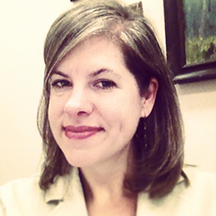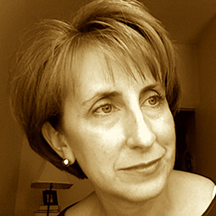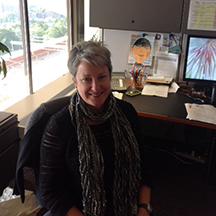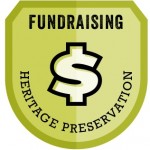Collections are central to the mission of most cultural institutions, from libraries and archives to museums and historical societies. Finding and sustaining funds to care for those collections, however, can often be a daunting task. In this five-part course, we explored fundraising strategies that to empower you—whether you’re a seasoned fundraiser or a rookie—to embrace this essential endeavor. We reviewed the basics of creating a fundraising plan, where to look for support, how to cultivate individual donors and members, how to write successful proposals, and creative ideas for funding your collections care projects. This course has concluded, but all of its materials from webinar recordings to handouts are available for viewing for free at your own pace.
Webinar 1: Fundraising Fundamentals
Monday, September 23, 2013, 2:00-3:30 p.m. (EDT)
Instructor: Kelsey Bates
You know how imperative fundraising is to your activities but there’s always a more pressing project at hand and so few resources—including time and staff—to dedicate to finding that critical support. Understanding the fundamentals of fundraising can help even the most novice fundraiser create a solid and actionable plan that fits within the institution’s scope and capabilities. In this 90-minute webinar, Kelsey Bates reviewed how to strategically tackle the fundraising process from beginning to end, including: working with your board, allocating staff time, setting goals and creating a fundraising calendar, as well as what to expect once you begin.
For closed captions, please access this via this link.
PowerPoint Presentation: Fundraising Fundamentals
Closed Captioning: Transcript
Outstanding Questions: Answers to a few outstanding questions from Webinar 1
Readings and Resources:
- Internal Revenue Service (Information on tax exempt status.)
- Conservation Assessment Program (General conservation assessment of museum collections, environmental conditions, and site.)
- The Association of Fundraising Professionals (A great membership/professional organization for those in the philanthropy field. Members have access to all kinds of resources including salary reports, guides to what types of fundraising techniques are successful or trending, job lists, and the latest books, blogs, and websites. They also have local chapters with training opportunities.)
- Strategic Planning for Results by Sandra Nelson (Broad resource geared toward public libraries, but helpful for strategic planning and determining how your collections care plan fits into your organization’s strategic goals.)
- Capitalize on Collections Care (A publication by Heritage Preservation in partnership with IMLS that provides an overview of fundraising for collections care.)
- Topical Resource List: Developing a Fundraising Plan by the Foundation Center (An extensive bibliography of resources on the topic of development planning.)
Webinar 2: Where to Look: Finding Support
Wednesday, September 25, 2013, 2:00-3:30 p.m. (EDT)
Instructor: Susan Mathisen
Foundations, corporations, and government granting agencies are all potential sources of funding, but finding the right fit for your project can often be a daunting task. This webinar provided research tips and tools to help participants find the prospects interested in funding collections care initiatives. It also explored how to present collections care projects in a way that demonstrates how they fulfill your mission but also address funder priorities in this changing philanthropic world.
For closed captions, please access this via this link.
PowerPoint Presentation: Where to Look: Finding Support
Closed Captioning: Transcript
Outstanding Questions: Answers to a few outstanding questions from Webinar 2
Readings and Resources:
- Webinar #2 Full Handout of Resources (broken up by topic below)
- Online Research Resources
- Foundations and Government Agencies
- Articles and Suggested Reading
Additional resources mentioned during the webinar:
- Independent Sector’s Value of Volunteer Time
- Charitable organizations can use the state estimate to quantify the enormous value volunteers provide. The dollar amount can be used when estimating volunteer time when requesting federal disaster aid.
- Foundation Directory Online
- While not providing full access to the subscriber-only database, you can still access a wealth of information about grantmakers, grants, companies, and 990s.
- Arts & Economic Prosperity III Calculator
- Americans for the Arts provides a free and simple tool for estimating the economic impact of your nonprofit arts and culture organization.
- International Directories of Foundations
- International, regional, and country-specific directories, and information about their contents.
- Grants Ontario
- For Canadians, Grants Ontario is the source for grants provided by the Ministry of Citizenship and Immigration; Ministry of Tourism, Culture and Sport; and, the Accessibility Directorate of Ontario.
Webinar 3: Creating Relationships: Donor and Member Cultivation
Tuesday, October 1, 2013, 2:00-3:30 p.m. (EDT)
Instructor: Kelsey Bates
According to the publication Capitalize on Collections Care, individuals are the most consistent supporters of nonprofit organizations and are the most likely source for external preservation funding. Learn how to cultivate those individuals and build lasting relationships. From making the “ask” to keeping them interested through member, donor, friend, and capital campaigns, this webinar will help you build a program that connects you with the people who care about your mission.
For closed captions, please access this via this link.
PowerPoint Presentation: Creating Relationships: Donor and Member Cultivation
Closed Captioning: Transcript
Readings and Resources:
- Building Relationships with Donors: Identification, Cultivation, Solicitation and Stewardship (American Library Association)
- Building Relationships with Donors: A Checklist for Creating a Proactive-Relationship Development Process, Kevin Strickland (GuideStar)
- Building Donor Relationships That Last (The Chronicle of Philanthropy)
- Philanthropy.com is a great source of articles and current information on fundraising for nonprofits.
- Membership Programs (National Park Service)
- Third Sector Today offers an email newsletter with helpful tips for nonprofit executives.
- Comparison sheet for online giving software from Affinity Resources
- Major Donors: Finding Big Gifts in Your Database and Online by Ted Hart, James M. Greenfield, Pamela M. Gignac and Christopher Carnie
- The Ask: How to Ask for Support for Your Nonprofit Cause, Creative Project, or Business Venture by Fredricks, Laura
- Membership Essentials: Recruitment, Retention, Roles, Responsibilities, and Resources by ASAE & The Center Membership Section Council, Sheri Jacobs
Examples of Donor and Member Programs:
- Whitney Museum of American Art Curate Your Own Membership
- Baltimore Museum of Art Donor Interface
- Historic New England Friends of the Library and Archives Membership
Webinar 4: Making Your Case: Writing Successful Proposals
Thursday, October 3, 2013, 2:00-3:30 p.m. (EDT)
Instructor: Barbara Lilley
Once you’ve found a potential funder, your next step is creating a compelling proposal that clearly articulates your goals. In this 90-minute webinar, we reviewed the components of a competitive proposal including creating a realistic budget; making the case for your project and mission; how proposals are often reviewed by funding agencies; and major pitfalls to avoid in proposal writing.
For closed captions, please access this via this link.
PowerPoint Presentation: Making Your Case: Writing Successful Proposals
Closed Captioning: Transcript
Readings and Resources:
- Find a Conservator (AIC)
- This research tool provides a systematic, consistent method of obtaining current information to identify and locate professional conservation services from all across the United States and abroad.
- Regional Alliance for Preservation
- Regional conservation centers are another valuable source for conservators for conservation treatment proposals and estimates.
- Planning and Prioritizing, Preservation Leaflets (NEDCC)
- Assessing Preservation Needs, Preservation Leaflets (NEDCC)
- Grant writing tools for nonprofit organizations (Non-profit Guides)
- Proposal Writing Short Course (The Foundation Center)
- Cultural Data Project
- Offers an online management tool designed to strengthen arts and cultural organizations
- Grants Development Office (LaGuardia Community College)
- Great lists of grant opportunities, biblography of grant writing resources, information on government regulations, etc.
- Quick Reference Download: Grant documents to keep on hand
- Shaping Outcomes
- Provides an online curriculum in outcomes-based planning and evaluation (OBPE)
Please read the following materials prior to this webinar:
Sample Grant Application One
Sample Grant Application Two
Grant Guidelines
Grant Program Rating Sheet
Webinar 5: Outside the Box: Creative Fundraising Approaches
Monday, October 7, 2013, 2:00-3:30 p.m. (EDT)
Instructor: Lee Price
As traditional federal and state funding continues to shrink, thinking outside the box becomes a necessity, not an indulgence. Across the country, donors are responding to approaches that are more emotional, intuitive, and personal. Tap into this new wave of fundraising with rewarding projects and programs that build new income streams while supporting your institution’s mission. Lee Price provided examples of creative fundraising projects, including crowdfunding, blogathons, adopt-an-object programs, promotional sponsorships, behind-the-scenes tours, and other special events.
For closed captions, please access this via this link.
PowerPoint Presentation: Outside the Box: Creative Fundraising Approaches
Closed Captioning: Transcript (coming soon)
Readings and Resources:
- Digital Persuasion: How Social Media Motivates Action and Drives Support for Causes
- A publication that analyzes the findings of a 2012 survey conducted by Georgetown University’s Center for Social Impact Communication and Waggener Edstrom Worldwide.
- 2013 eNonprofit Benchmarks Study
- An analysis of online messaging, fundraising, advocacy, social media, and mobile metrics for nonprofit organizations, prepared by M+R Strategic Services and The Nonprofit Technology Network.
- The 2013 Millennial Impact Report
- This report examines emerging trends relating to digital interactions between Millennials and nonprofits, based on a survey and analysis by Achieve.
- Social Media Use in Archives and Special Collections, Social Media Posting Guides
- The results of a 2012 survey conducted by Rebecca Hopman (Special Collections Coordinator at the University of Maryland Special Collections), offering a snapshot of social media use by collecting institutions, and a very helpful series of downloadable social media reference sheets targeted for librarians and archivists.
- Know Your Own Bone
- Highly recommended blog that explores ideas for online engagement strategies for museums and cultural centers, written by Colleen Dilenschneider, Chief Market Engagement Officer for IMPACTS.
- New Opportunities in Social Media
- Introductory information on social media for collecting institutions by Lee Price, Director of Development at the Conservation Center for Art and Historic Artifacts.
 Kelsey Scouten Bates is the director of development at the Birmingham, Alabama, Public Library, which has one of the largest and most notable special collections in the country. Kelsey has been fundraising for museums and libraries for 15 years and has built a wide range of experience at institutions across the country including the Baltimore Museum of Art in Maryland, and the Chinati Foundation in Marfa, Texas. Kelsey also has experience from the other side of fundraising while administrating the Conservation Assessment Program grant for Heritage Preservation. She has an MS in Professional Writing from Towson University in Baltimore, Maryland, and a BA in American History from the University of Maryland at College Park. Kelsey has also worked as an instructor of English for speakers of other languages in Taiwan and the U.S. and as an adjunct professor in Communication Arts at Samford University in Birmingham.
Kelsey Scouten Bates is the director of development at the Birmingham, Alabama, Public Library, which has one of the largest and most notable special collections in the country. Kelsey has been fundraising for museums and libraries for 15 years and has built a wide range of experience at institutions across the country including the Baltimore Museum of Art in Maryland, and the Chinati Foundation in Marfa, Texas. Kelsey also has experience from the other side of fundraising while administrating the Conservation Assessment Program grant for Heritage Preservation. She has an MS in Professional Writing from Towson University in Baltimore, Maryland, and a BA in American History from the University of Maryland at College Park. Kelsey has also worked as an instructor of English for speakers of other languages in Taiwan and the U.S. and as an adjunct professor in Communication Arts at Samford University in Birmingham.
 Susan Mathisen’s expertise bridge the fields of conservation and fundraising; she has held conservation positions at the Morgan Library, the Smithsonian Institution, the National Gallery of Art, the Cathedral of St John the Divine, and the Conservation Center at NYU, where she was administrative conservator, on the adjunct faculty, and served as a conservation consultant at Villa La Pietra. Development positions include those at the National Academy Museum, the American Academy in Rome, and the Friends of the American Museum in Britain. In 2007, she started SAM Fundraising Solutions, a consultancy specializing in fundraising for art conservation and historic preservation. She helps museums, historic houses, and grassroots groups meet their fundraising and strategic planning goals and also teaches workshops on fundraising for collections care. Current and past clients include the Merchant’s House Museum, the New Jersey Council for the Humanities, the Barnum Museum, Shakespeare’s Globe (London), Park Avenue Armory, the Friends of Connetquot, the American Friends of the London Philharmonic Orchestra, Fraunces Tavern Museum, the Ah-Tha-Thi-Ki Seminole Museum, the Campaign for the Westchester Children’s Museum, Storm King Art Center, Hunterdon Art Museum, and the Douglaston-Little Neck Historical Society. She serves on the Board of the Historic Districts Council, the only advocacy group for New York’s historic neighborhoods.
Susan Mathisen’s expertise bridge the fields of conservation and fundraising; she has held conservation positions at the Morgan Library, the Smithsonian Institution, the National Gallery of Art, the Cathedral of St John the Divine, and the Conservation Center at NYU, where she was administrative conservator, on the adjunct faculty, and served as a conservation consultant at Villa La Pietra. Development positions include those at the National Academy Museum, the American Academy in Rome, and the Friends of the American Museum in Britain. In 2007, she started SAM Fundraising Solutions, a consultancy specializing in fundraising for art conservation and historic preservation. She helps museums, historic houses, and grassroots groups meet their fundraising and strategic planning goals and also teaches workshops on fundraising for collections care. Current and past clients include the Merchant’s House Museum, the New Jersey Council for the Humanities, the Barnum Museum, Shakespeare’s Globe (London), Park Avenue Armory, the Friends of Connetquot, the American Friends of the London Philharmonic Orchestra, Fraunces Tavern Museum, the Ah-Tha-Thi-Ki Seminole Museum, the Campaign for the Westchester Children’s Museum, Storm King Art Center, Hunterdon Art Museum, and the Douglaston-Little Neck Historical Society. She serves on the Board of the Historic Districts Council, the only advocacy group for New York’s historic neighborhoods.
 Barbara Lilley is currently the Program Officer for the New York State Program for the Conservation and Preservation of Library Research Materials at the New York State Library, which provides over $2 million in grants for the preservation of mainly paper-based materials. She also provides consultant services regarding preservation throughout the state. Barbara is also the State Aid Coordinator for approximately $90 million in state aid to libraries and library systems. Previously she was the Head of the Preservation Reformatting Department, Preservation Division for Columbia University Libraries, and Project Coordinator for the Foundations of Western Civilization Preservation Project, an NEH-funded project, also at Columbia University. Barbara has also worked at Northwestern University Library in Evanston, Illinois, as a preservation librarian, and she began her career in preservation as a Mellon Foundation Preservation Intern at Columbia University. She is a graduate of the University of Michigan, College of Literature, Science and the Arts and School of Library and Information Studies.
Barbara Lilley is currently the Program Officer for the New York State Program for the Conservation and Preservation of Library Research Materials at the New York State Library, which provides over $2 million in grants for the preservation of mainly paper-based materials. She also provides consultant services regarding preservation throughout the state. Barbara is also the State Aid Coordinator for approximately $90 million in state aid to libraries and library systems. Previously she was the Head of the Preservation Reformatting Department, Preservation Division for Columbia University Libraries, and Project Coordinator for the Foundations of Western Civilization Preservation Project, an NEH-funded project, also at Columbia University. Barbara has also worked at Northwestern University Library in Evanston, Illinois, as a preservation librarian, and she began her career in preservation as a Mellon Foundation Preservation Intern at Columbia University. She is a graduate of the University of Michigan, College of Literature, Science and the Arts and School of Library and Information Studies.
 Lee Price is the director of development at the Conservation Center for Art and Historic Artifacts (CCAHA) and is not only responsible for raising money for the Center but also for assisting cultural institutions with developing fundraising strategies for preservation and conservation projects. Currently he is assisting with the organization of ten crowdfunding campaigns through “Pennsylvania’s Top 10 Endangered Artifacts,” a component of Pennsylvania’s Connecting to Collections Implementation grant project. On personal time, Lee manages two blogs: “Tour America’s Treasures[on hiatus],” for which he is conducting a multi-year, site-by-site introduction to all 1,200 Save America’s Treasures sites, and “21 Essays,” which takes all cultural history as its subject. In addition, he has participated in two blogathons that raised over $25,000 for film preservation projects.
Lee Price is the director of development at the Conservation Center for Art and Historic Artifacts (CCAHA) and is not only responsible for raising money for the Center but also for assisting cultural institutions with developing fundraising strategies for preservation and conservation projects. Currently he is assisting with the organization of ten crowdfunding campaigns through “Pennsylvania’s Top 10 Endangered Artifacts,” a component of Pennsylvania’s Connecting to Collections Implementation grant project. On personal time, Lee manages two blogs: “Tour America’s Treasures[on hiatus],” for which he is conducting a multi-year, site-by-site introduction to all 1,200 Save America’s Treasures sites, and “21 Essays,” which takes all cultural history as its subject. In addition, he has participated in two blogathons that raised over $25,000 for film preservation projects.





